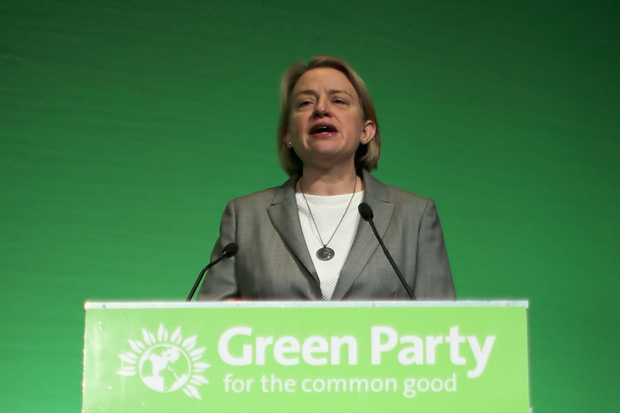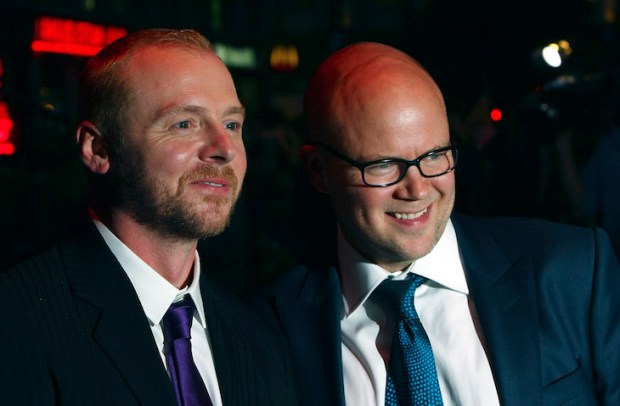I’m disappointed that Ed Balls’s suggestion that the Office of Budget Responsibility should audit the parties’ manifestos was never taken up, not least because we will never know what Robert Chote thinks of the Green party’s claim that all its proposals are ‘fully costed’. Believe it or not, this includes the commitment to spend £45 billion on loft insulation in the next parliament.
It’s quite something, the Greens’ manifesto. No doubt you’ll have already read about some of their more reasonable measures — such as the ‘complete ban on cages for hens and rabbits’ and the insistence that ‘UK taxpayers’ money is not used for bullfighting’. But the sheer scale of their financial profligacy is breathtaking.
In total, the party estimates its proposals — which include doubling child benefit, jacking up the state pension to £180 a week and an extra £12 billion for the NHS — would increase public expenditure by £177 billion a year by 2020. But don’t be alarmed because, according to Natalie Bennett, a Green government would be raising an additional £198 billion a year in taxes by then. That’s right, the Greens are predicting a budget surplus by the end of the next parliament. They believe that their entire suite of measures can be more than paid for by a few simple tax increases. These are listed in a chapter of the manifesto called ‘It does all add up’.
For instance, they’d impose a 2 per cent annual levy on the net worth of anyone with assets valued at over £3 million, so if you own a house worth £10 million you’d have to hand over £200,000 to HMRC. This ‘wealth tax’ would generate £25 billion a year, apparently. The party also thinks it can raise £6.7 billion from an ‘unhealthy food tax’, £12.5 billion from raising corporation tax and £20 billion from a ‘Robin Hood Tax’ on financial transactions. (Shouldn’t it be called a ‘King John Tax’?)
But that only gets you so far, so the Greens would raise a further £80 billion a year from ‘other’ measures, such as abolishing capital gains tax allowances (£3.3 billion), increasing duty on alcohol and tobacco (£5.7 billion) and — of course — clamping down on tax avoidance and evasion, otherwise known as the Magic Money Tree. That last measure is good for a whopping £30 billion a year.
Far be it from me to predict how a sober-minded economist might react to this ‘costed plan’, but I imagine he or she would ask whether the Greens have factored in the ‘behavioural effect’ these measures would in all likelihood give rise to. For instance, the party estimates that raising the top rate of tax to 60 per cent would generate an additional £2.3 billion a year in revenue. But that seems unlikely, to put it mildly. According to the Treasury’s analysis, Alistair Darling’s decision to raise the top rate from 40 to 50 per cent in his 2010 budget yielded much less than the anticipated amount because of the ‘considerable behavioural response to the rate change’. The Treasury concluded that it was ‘quite possible’ that the overall impact on tax revenues in 2010/11 was ‘negative’.
It’s not hard to imagine the ‘behavioural response’ of high-net-worth individuals to taxing their assets by 2 per cent a year, or of investment banks to a ‘Robin Hood Tax’, or of some businesses to the hike in corporation tax. They’d relocate offshore just as soon as possible, notwithstanding the new Green tariff on air travel (£16 billion). As with Darling’s rate change, the effect of all these taxes could quite easily be ‘negative’.
Of course the reason no serious economist has subjected the Green party’s policies to a forensic analysis is because no one expects Natalie Bennett to be the next Prime Minister. The nearest we got to that was Nick Ferrari’s cross-examination of her on LBC, an interview that produced the now-famous ‘brain fade’ moment in which she was unable to answer a single question abouthow any of her proposals would be funded.
Yet, incredibly, some 5 per cent of the population say they’re going to vote Green on 7 May. Until recently I assumed that these people were complete nutjobs, but I sat next to a level-headed Oxford graduate at a dinner party the other day who told me she was a member of the party. Politics really does make otherwise sensible people behave very oddly. Will she change her mind after reading the Green manifesto? I’d love to think so, but I doubt it.
Got something to add? Join the discussion and comment below.
Get 10 issues for just $10
Subscribe to The Spectator Australia today for the next 10 magazine issues, plus full online access, for just $10.
Toby Young is associate editor of The Spectator.
You might disagree with half of it, but you’ll enjoy reading all of it. Try your first month for free, then just $2 a week for the remainder of your first year.















Comments
Don't miss out
Join the conversation with other Spectator Australia readers. Subscribe to leave a comment.
SUBSCRIBEAlready a subscriber? Log in